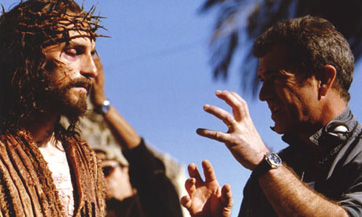|
|
What Went Right: The Passion of the ChristBy Shalimar SahotaMarch 22, 2012
Gibson co-wrote the screenplay with Benedict Fitzgerald, and even he was initially baffled as to why Gibson wanted to do it in a dead language. Compared to previous Biblical epics, instead of going with English spoken in American accents, the decision to use Aramaic and Latin added a level of authenticity to the film. William J. Fulco was credited with translating, and even declared that being a dead language the Aramaic in the film is not perfect. Still, for the audience that largely doesn’t know any better, from watching it you would think that the actors were fluent in it. Initially wanting to release the film without subtitles, Gibson’s decision to add them came during editing. Trying the film with them, he said, “I just found that it was better, because you’re almost forced to read the written word. It’s like an interesting exercise.” Promoting The Passion of the Christ, involved setting up preview screenings and inviting religious leaders, hoping that they would enjoy the film and spread the word to their congregation. In some cases Gibson would visit evangelical pastors across the US, where he would screen and talk about the film. It was during the summer of 2003 when the controversy went into overdrive. Since its release, Entertainment Weekly has ranked The Passion of the Christ as the most controversial film ever. One could argue that the controversy surrounding it managed to work in its favor and simply got people talking. Some were already opposed and offended by the film, even while it was still shooting, for the main issue drawing criticism was that it could be anti-Semitic, blaming the Jews for delivering Jesus to Pontius Pilate.
[ View other columns by Shalimar Sahota ]
[ View other What Went Right columns ]
[ Email this column ]
|

|
|
|

|
Friday, November 1, 2024
© 2024 Box Office Prophets, a division of One Of Us, Inc.


